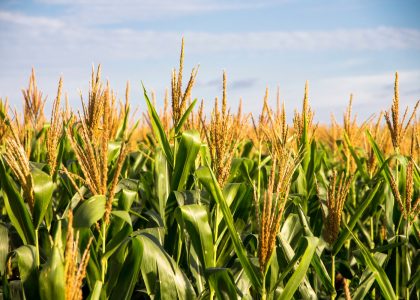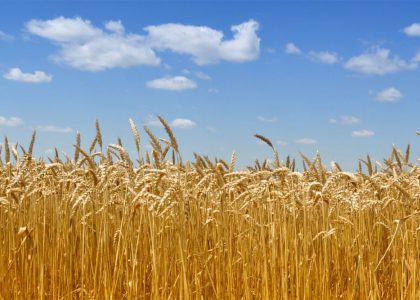A brief review of our primary El Nino forecast shows considerable agreement that this year's El Nino effect will be similar if not, stronger than the El Nino event of 1997. You can read the summary of the meteorological information in our first piece on this topic, "2015 El Nino and the U.S. Grain Markets." This week, we'll look at the anticlimactic chart evidence that suggest the media may create a bigger threat than reality suggests is warranted. Headlines draw readers. Readers support advertising. Headline writers get paid. As a trader, definitely not a writer, my goal is to profit from projected price action. It may not be glamorous. It may not draw readers. But, this is the primer you need for the next 18 months of global grain trading.
 El Nino analysis begins by identifying the changing weather patterns, determining what is grown in the affected areas and finally, observing its impact on localized areas of production. From the World Meteorological Organization (WMO), " The phenomenon can alter established weather patterns in different parts of the world, bringing severe drought to parts of Asia while at the same time bringing heavy flooding to some parts of North America."
El Nino analysis begins by identifying the changing weather patterns, determining what is grown in the affected areas and finally, observing its impact on localized areas of production. From the World Meteorological Organization (WMO), " The phenomenon can alter established weather patterns in different parts of the world, bringing severe drought to parts of Asia while at the same time bringing heavy flooding to some parts of North America."
Four of the world's largest sugar producers by rank are India, Brazil, China and Thailand. India is already 12% behind their typical summer monsoon rainfall and rapidly approaching the season's end. Here's a breakdown of the major sugar producing regions. Given their geography, their fears seemed reasonable.
So, how did sugar prices fair through the last significant El Nino?

The charts we'll be looking at today all come from Qandl.com. They're a great resource for historical data outside of the normal domestic markets. The sugar chart above shows a recurring theme that we'll be presenting throughout this piece. The fear of the 1997-1998 El Nino was far worse than its bite.
Moving to rice futures we see a similar pattern. Here are the major rice producing countries. Again, right in the heart of the changing weather patterns.
Given their geography, let's see just how rice prices fared.
 The U.S rice futures may seem like an illogical choice but, they still control the majority of the trading volume. However, the Thailand exchange's rice futures are gaining ground as a much smaller contract at a geographically relevant exchange.
The U.S rice futures may seem like an illogical choice but, they still control the majority of the trading volume. However, the Thailand exchange's rice futures are gaining ground as a much smaller contract at a geographically relevant exchange.
The crops simply don't care what the newspapers have to say. The changing weather patterns have actually been more beneficial than harmful towards all of the exchange traded crops except one that's famous for its volatility which, we'll finish with.
Moving to a much more universal product, vegetable oils, we need to describe the global landscape. Here in the U.S., soybean oil dominates the vegetable oil landscape. However, North American vegetable oil production must include Canada's canola oil production. Moving overseas, we see that palm and rapeseed are the dominant products. While each of these has their own specialized uses, economically, they are substitute goods and should be treated as such for trading purposes.
This chart provides a great example of total vegetable oil production along with the geographic dominance of the local trade. We discussed the local soybean market in our domestic analysis of this year's El Nino. This week, we'll look at palm kernel and rapeseed oil production as, once again, these countries seem to be right in the heart of the anticipated climate changes.
 Clearly, these markets are tied to each other by price action as well as they are to the U.S. soybean oil market. This is also where we start to dovetail into the volatility that El Nino can generate.
Clearly, these markets are tied to each other by price action as well as they are to the U.S. soybean oil market. This is also where we start to dovetail into the volatility that El Nino can generate.
No market generates volatility like the coffee market. Like the vegetable oil markets, we need to examine more than one locality and exchange. Arabica coffee is the high quality bean that many of us find at Starbucks. Robusta coffee is typically what's ground into instant coffee. Arabica coffee is traded in New York and London along with the robusta blends even though their geographical production can differ greatly. Therefore, as always, it is our job to focus on price rather than, rhetoric. Keeping that in mind, the coffee futures did provide some dramatic El Nino trading opportunities.
As you can see from the pricing evidence, El Nino is becoming a classic, "Buy the rumor, sell the fact." commodity play. Of all the major markets we've discussed thus far, only the coffee futures have had any major move as a direct result of El Nino's changing weather patterns. We'll be tracking the commercial traders' behavior as these markets extend themselves in any direction looking for clues that market movement and commercial traders' price projections become incongruent. It has been our experience that the commercial traders are typically right at the markets' extremes. We expect this continue and will update with corresponding trading recommendations through our CotSignals.com nightly email.











